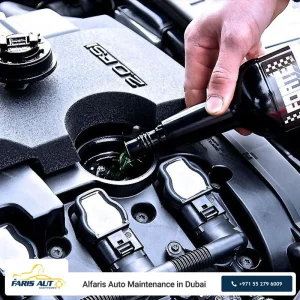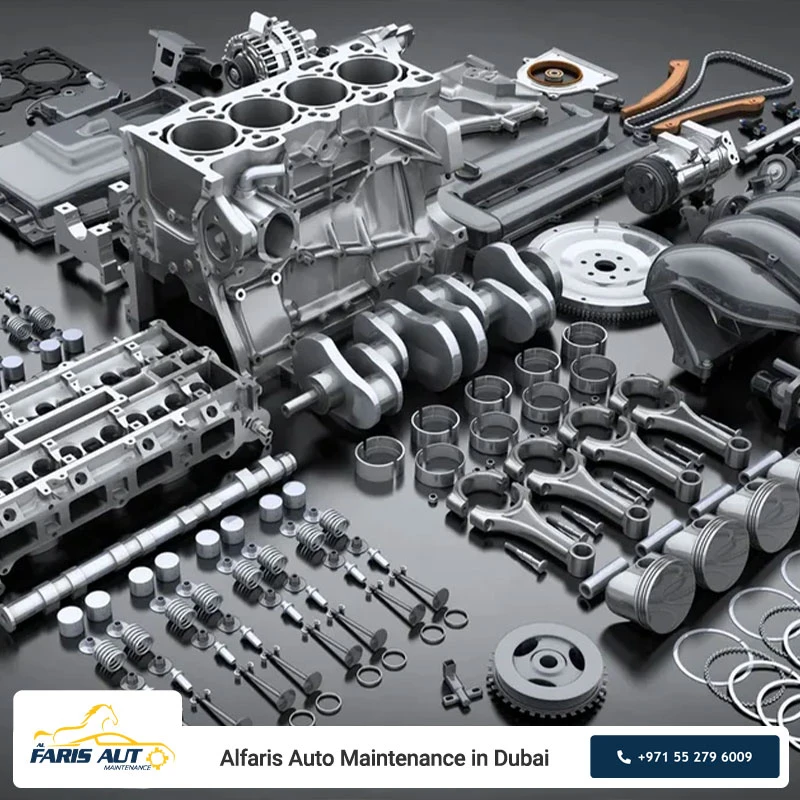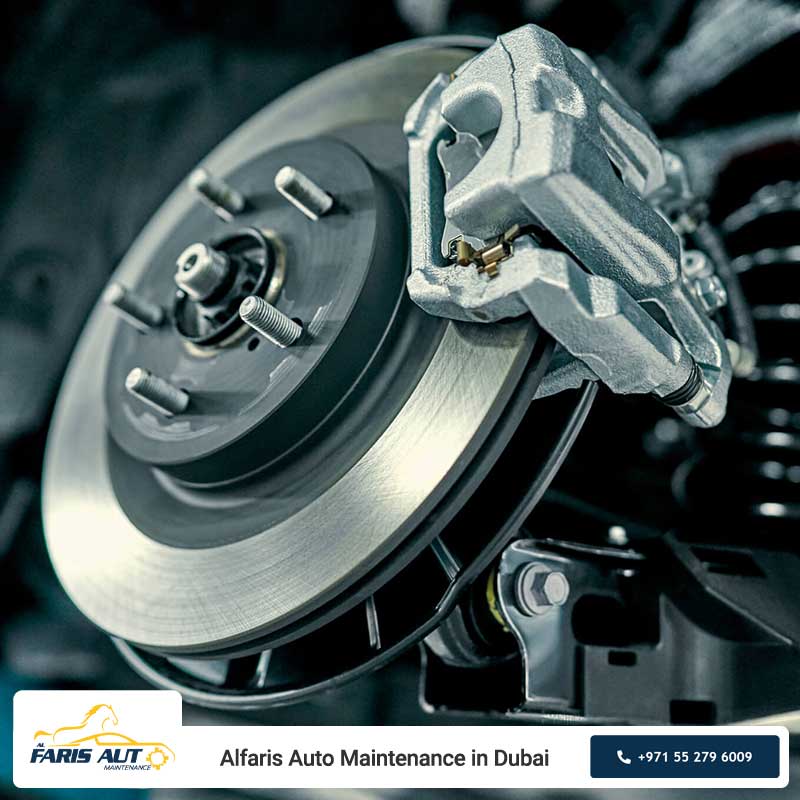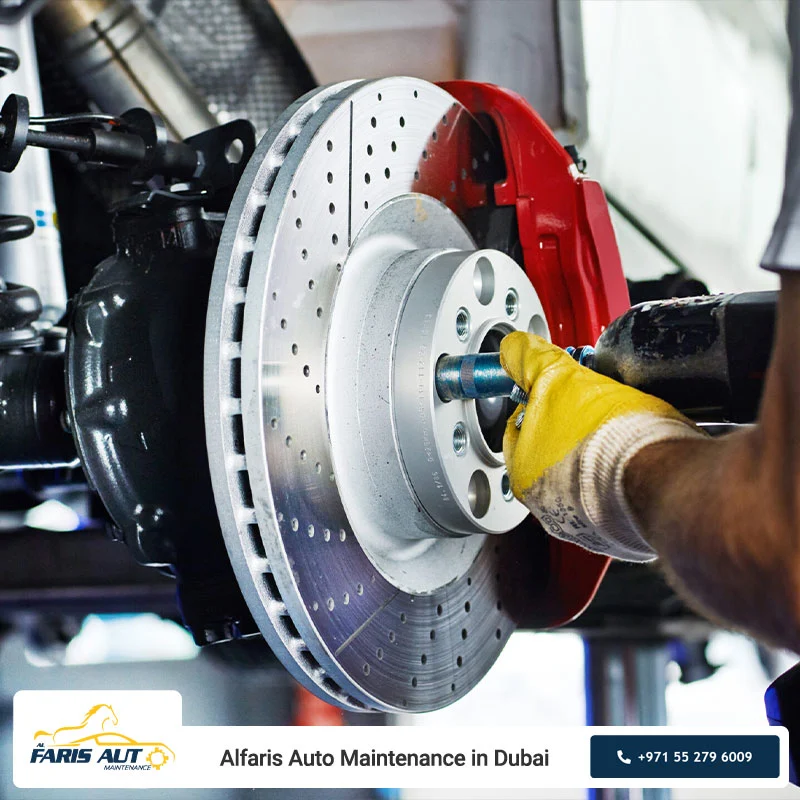Hearing the term engine flush might raise the question: what is engine flushing? Engine flushing is the process of internally cleaning the oil or coolant circuits of the engine with the aim of removing sludge, carbon deposits, oxides, and other contaminants that accumulate over time. This procedure can involve the use of chemical cleaning solutions, emulsifying additives, pressurized circulation, or a combination of mechanical and chemical methods.
Technically, flushing is performed to restore lubrication efficiency, improve heat transfer, and reduce corrosion; however, improper execution can lead to consequences such as the release of loose fine particles and blockage of filters or oil passages. In this article, Alfaris Auto addresses the technical aspects, common compositions of flushing materials, application methods, and step-by-step instructions to help vehicle owners use this method with greater awareness.
- What is Vehicle Engine Flushing?
- Is Engine Flushing Necessary?
- What Are the Benefits of Flushing?
- When is Engine Flushing Needed?
- Practical Recommendations for Vehicle Flushing
What is Vehicle Engine Flushing?
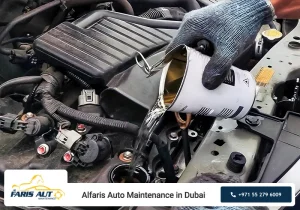
Vehicle engine flushing is a multifaceted process aimed at removing solid and semi-solid contaminants from lubrication or coolant pathways. From an engineering perspective, the goal is to reduce fluid resistance, restore useful viscosity, eliminate polar compounds, and decrease peroxide and organic acid content that lead to sludge and gel formation. To answer the question what is engine flushing? comprehensively, here are the types of flushing:
- Coolant Flush: This involves using mild acid or controlled alkaline solutions along with corrosion inhibitors to remove oxide and carbonate deposits inside the radiator and coolant channels. This process helps improve heat exchange and reduce engine temperature.
- Oil System Flush: This includes adding sulfonated or phosphate-based cleaning agents to the old oil and circulating it to dissolve and suspend sludge.
- Fuel/Injector Flush: This procedure cleans the fuel lines and injectors from deposits and paraffin, improving engine performance and reducing fuel consumption.
Each type of flushing differs chemically and operationally (temperature, pressure, circulation time) and must be compatible with the engine manufacturer’s specifications.
Is Engine Flushing Necessary?
So far, we have largely answered the question what is engine flushing? but is flushing necessary for the engine? The answer is not always, but under specific conditions and controlled circumstances, it is necessary and beneficial. Engine flushing is recommended as a corrective operation when the following criteria are met:
- An engine that has operated for a long time with poor-quality oil or without regular oil changes: in this case, significant sludge and deposits have accumulated that can impair engine performance.
- Presence of sludge or very dark and thick oil: if the engine oil has turned black and thick or smells like burnt fuel, the likelihood of sludge is high.
- Before or after major engine repairs: after disassembling and reassembling internal engine parts, engine flushing can remove remaining particles and contaminants. Also, to become familiar with the type of car engines repair process, you can read the related article on our website.
- Buying or selling a used car: performing an engine flush can increase buyer confidence and guarantee engine health.
Situations Where Flushing May Be Harmful:
- High-mileage engines with severely worn parts: in this case, flushing might dislodge loose deposits that could clog the oil filter or narrow passages, or the detached particles might cause further wear.
- Flushing performed by inexperienced individuals or with inappropriate materials: using non-standard products or incorrect methods can damage the engine.
Alfaris Auto workshop in Dubai recommends vehicle owners consult a professional mechanic and check the oil and engine condition before performing flushing. Also, using materials and methods approved by the vehicle manufacturer or a specialized mechanic is very important. For free consultation, you can contact Alfaris Auto.
What Are the Benefits of Flushing?
Continuing the article on What is Engine Flushing?, let’s review the benefits of engine flush:
- Restoring oil flow and reducing pressure drop: removing sludge and deposits opens oil passages and stabilizes oil pressure within the design range.
- Improving lubrication performance and reducing wear: by eliminating abrasive particles and restoring oil properties, the oil quality improves, resulting in stronger lubrication.
- Increasing heat exchange capacity: in coolant system flushing, removing thermal deposits increases the heat transfer coefficient and reduces hot spots.
- Preparing for synthetic-based oil changes or special additives: engine flushing removes polar contaminants that might react with new oil, creating a clean base for oil replacement.

Contact with AlFaris
You can contact our experts for free consultation, discuss the type of problem or service you are requesting, and arrange for your presence.
Failure to perform timely engine flushing can lead to engine failures. It is recommended to read the article Signs of Engine Failure You Should Not Ignore to prevent such issues.
When is Engine Flushing Needed?
Recognizing the signs and the right time for engine flushing is crucial.
Signs and Indicators for Flushing:
- Engine oil is very dark or has a burnt fuel-like smell.
- Excessive smoke from the exhaust or reduced acceleration and power.
- Increased oil consumption or visible internal oil leaks.
- Unstable oil pressure or low oil pressure readings on gauges.
- Abnormal rise in engine operating temperature (especially if there is a cooling system problem).
By identifying these signs, we gain a better understanding of the question what is engine flushing? and realize that proper execution is essential. Engine flushing is not recommended as a routine service but should be performed based on the actual engine condition and vehicle operating conditions. For vehicles with heavy use or poor oil quality, flushing might be useful, but always prioritize the vehicle manufacturer’s instructions and expert mechanic advice. Alfaris Auto, as your constant companion, is ready to provide car repair services in Dubai, including periodic maintenance.
Engine flushing involves several techniques selected based on vehicle condition and engine type. One method is using cleaning additives added to the current oil, which dissolve deposits before the oil and filter are changed. There are also mechanical flushing devices that circulate cleaning solutions through the oil or coolant system. Additionally, manual flushing of the coolant system is performed by draining the coolant and repeatedly washing with special chemicals.
Practical Recommendations for Vehicle Flushing
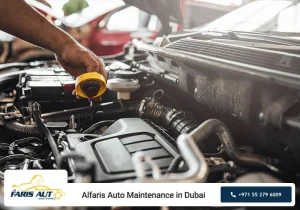
In conclusion, understanding the importance of engine flushing for removing deposits and improving engine performance shows that under certain conditions, it can prevent costly failures. However, this process is not necessary for all vehicles or as a regular routine. The best approach is to carefully assess oil and engine condition, consult a professional mechanic, and follow the manufacturer’s guidelines. If signs such as sludge presence, oil pressure drop, or poor engine performance are observed, engine flushing can be a suitable solution. Yet, in heavily worn engines or if performed incorrectly, it may have negative consequences. Therefore, choosing safe methods and approved materials is crucial. Ultimately, engine flushing, when done with technical and professional care, can extend engine life, improve fuel efficiency, and maintain vehicle value, making it a smart investment for every vehicle owner.
